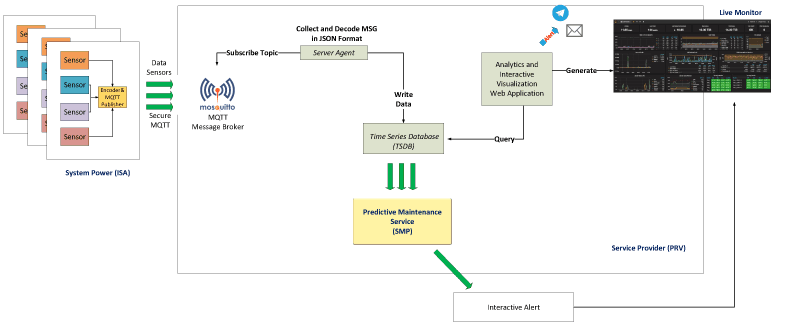by Alessio Bechini (University of Pisa, Italy), Giulio Masetti (ISTI-CNR, Italy), Giorgio O. Spagnolo (ISTI-CNR, Italy), and Carlo Vallati (University of Pisa, Italy)
SmaRIERS (Smart Railway Infrastructures: Efficiency, Reliability and Safety) is a technology transfer project financed by the Tuscany Region. The project partners include ECM s.p.a. (Progress Rail of the multinational Caterpillar Inc. group), a Pistoia-based company and leader in the railway sector that develops solutions and technologies for the safety and control of railway infrastructure, and the Formal Methods and Tools (FMT) and Software Engineering and Dependable Computing (SEDC) research labs of ISTI-CNR. The project is conducted in strong collaboration with the Department of Information Engineering of the University of Pisa.
Railway infrastructure is a highly complex system that includes several interconnected and co-operating devices, components, and subsystems. In SmaRIERS, we focus on the study of Uninterruptible Power Supply (UPS). UPS is a modular system that ensures the uninterruptible power supply of signalling systems. The main components of such signalling systems are control logic devices and so-called “yard devices” installed along the railway infrastructure (switches, train detection elements, light signals, etc.) that perform the signalling tasks – vital elements for the safety of people and property that therefore require an uninterruptible power supply. The project idea is to equip the UPS with a “SMART” diagnostic system capable of becoming proactive, i.e., capable of preventing critical situations or future problems, so as to allow the operator to plan appropriate actions in advance, through the analysis of plant diagnostic data. SmaRIERS also includes studies of measurements related to system availability by means of stochastic modelling, as a support to the design of innovative station power systems.
The aforementioned UPS systems are equipped with a communication port and support a standardised protocol according to the IS01 standard published by the Italian national railway infrastructure manager (RFI). In SmaRIERS, we design a new communication protocol that allows collection of the data of UPS sensors in a simple and efficient way. The idea is to exploit the advantages offered by the so-called MQTT protocol for transporting UPS data to the database. MQTT is an ISO standard publish-subscribe type protocol, which can manage message dispatching in a simple way. The data of UPS sensors are thus published and made available via the MQTT broker. Figure 1 depicts the system architecture, with the UPS data given as input on the left. The data published in the MQTT broker is read and decoded in the JSON format to be stored in the Time Series Database (TSDB). Such a TSDB is exploited by a Web application to monitor the sensor values via a dashboard that allows the data to be monitored interactively. The system will also allow generation of alerts, via email and Telegram messages, to inform the plant managers about anomalies and errors.

Figure 1: SmaRIERS system architecture.
Furthermore, we study predictive maintenance algorithms for improving the system maintenance as well as algorithms to recommend actions for improving the system’s availability (prescriptive analytics), starting from the data collected as mentioned above. To allow a better training of the machine-learning systems, it is of particular importance to be able to use a set of field data. To this aim, we plan to use data from apparatuses already employed in current railway stations, available to ECM; even if they concern less innovative systems than those proposed in SmaRIERS, they still represent a reasonable knowledge base that can provide added value. At the same time, a preliminary analysis of the power supply system is carried out to identify the availability characteristics of the station power systems, also in relation to power consumption characteristics. We study measures representative of availability and energy consumption through stochastic modelling, to support innovative design of the station power systems. The planned case studies are useful for achieving, among others, the following goals:
- Identify critical elements of the existing configuration
- Identify the degree of redundancy of particularly critical system elements
- Identify the optimal charge level of the batteries, trading between costs and availability.
SmaRIERS has a duration of two years and is coordinated by ECM.
Link: https://smariers.isti.cnr.it/
References:
[1] N. Davari, B. Veloso, G.D.A. Costa, P.M. Pereira, R.P. Ribeiro & J. Gama, A Survey on Data-Driven Predictive Maintenance for the Railway Industry. Sensors 21(17), 2021. https://doi.org/10.3390/s21175739
[2] A. Ferrari & M.H. ter Beek, Formal Methods in Railways: a Systematic Mapping Study. ACM Computing Surveys, 2022. https://doi.org/10.1145/3520480
Please contact:
Giorgio O. Spagnolo
ISTI-CNR, Italy










